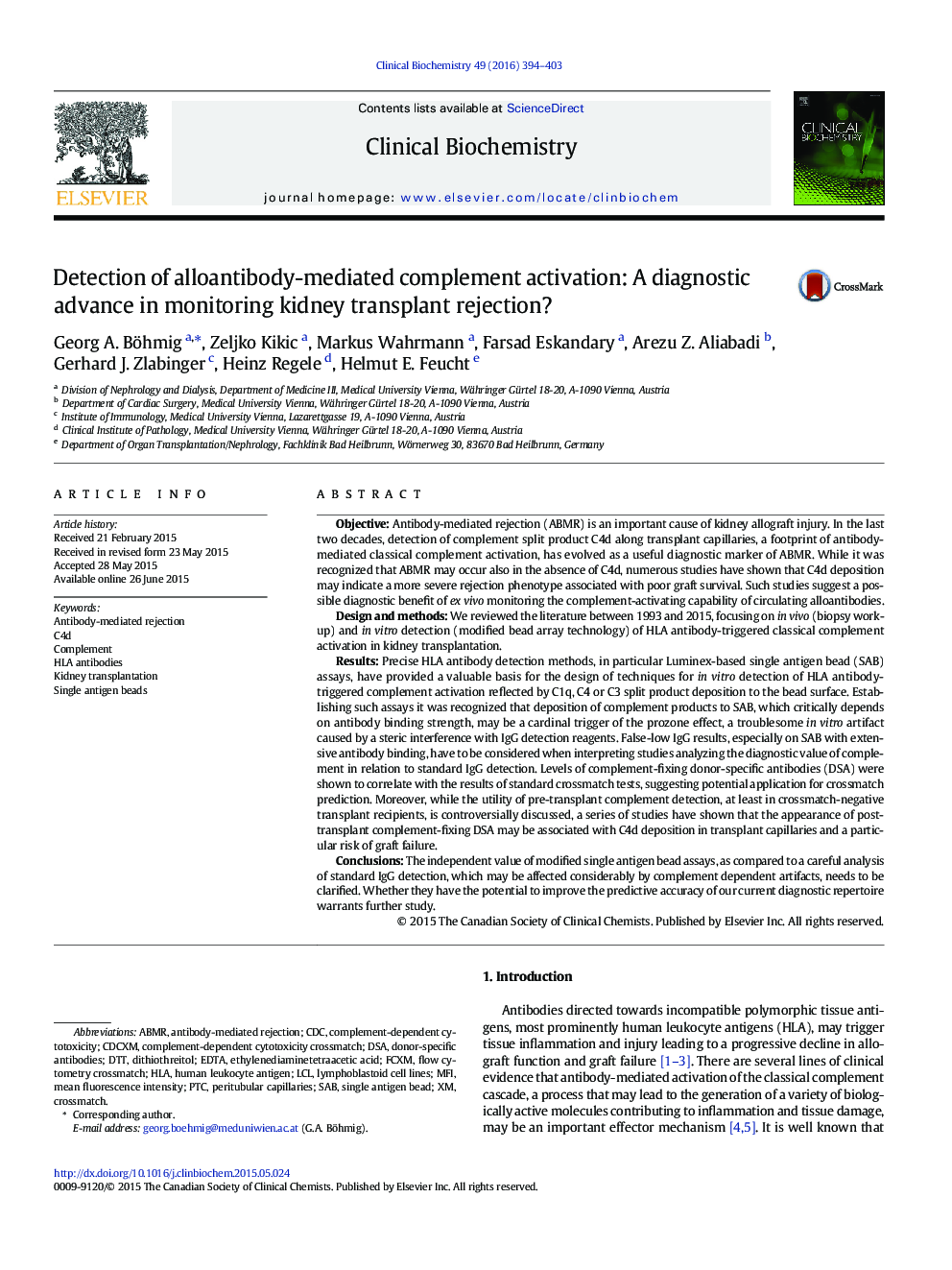| کد مقاله | کد نشریه | سال انتشار | مقاله انگلیسی | نسخه تمام متن |
|---|---|---|---|---|
| 1968622 | 1538863 | 2016 | 10 صفحه PDF | دانلود رایگان |
• We review the role of classical complement activation in kidney transplantation.
• We discuss the role of C4d staining as a marker of antibody-mediated rejection.
• Bead arrays enable in vitro detection of alloantibody-triggered complement deposition.
• In vitro complement binding assays may help uncover harmful HLA alloreactivity.
ObjectiveAntibody-mediated rejection (ABMR) is an important cause of kidney allograft injury. In the last two decades, detection of complement split product C4d along transplant capillaries, a footprint of antibody-mediated classical complement activation, has evolved as a useful diagnostic marker of ABMR. While it was recognized that ABMR may occur also in the absence of C4d, numerous studies have shown that C4d deposition may indicate a more severe rejection phenotype associated with poor graft survival. Such studies suggest a possible diagnostic benefit of ex vivo monitoring the complement-activating capability of circulating alloantibodies.Design and methodsWe reviewed the literature between 1993 and 2015, focusing on in vivo (biopsy work-up) and in vitro detection (modified bead array technology) of HLA antibody-triggered classical complement activation in kidney transplantation.ResultsPrecise HLA antibody detection methods, in particular Luminex-based single antigen bead (SAB) assays, have provided a valuable basis for the design of techniques for in vitro detection of HLA antibody-triggered complement activation reflected by C1q, C4 or C3 split product deposition to the bead surface. Establishing such assays it was recognized that deposition of complement products to SAB, which critically depends on antibody binding strength, may be a cardinal trigger of the prozone effect, a troublesome in vitro artifact caused by a steric interference with IgG detection reagents. False-low IgG results, especially on SAB with extensive antibody binding, have to be considered when interpreting studies analyzing the diagnostic value of complement in relation to standard IgG detection. Levels of complement-fixing donor-specific antibodies (DSA) were shown to correlate with the results of standard crossmatch tests, suggesting potential application for crossmatch prediction. Moreover, while the utility of pre-transplant complement detection, at least in crossmatch-negative transplant recipients, is controversially discussed, a series of studies have shown that the appearance of post-transplant complement-fixing DSA may be associated with C4d deposition in transplant capillaries and a particular risk of graft failure.ConclusionsThe independent value of modified single antigen bead assays, as compared to a careful analysis of standard IgG detection, which may be affected considerably by complement dependent artifacts, needs to be clarified. Whether they have the potential to improve the predictive accuracy of our current diagnostic repertoire warrants further study.
Journal: Clinical Biochemistry - Volume 49, Issues 4–5, March 2016, Pages 394–403
